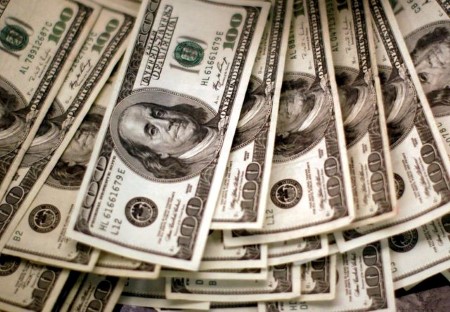




Policy Rate Updates: Double cut finale
 DOWNLOAD
DOWNLOAD

Monthly Economic Update: One for the road
 DOWNLOAD
DOWNLOAD

Inflation Update: Still low, still slow
 DOWNLOAD
DOWNLOAD


Dollar dips in cautious trade ahead of US jobs data

LONDON, Oct 7 (Reuters) – The dollar eased on Friday, ahead of a key employment report later that could offer a litmus test of the strength of the US economic recovery, but with the Federal Reserve’s commitment to fighting inflation, losses could be short-lived.
The euro and the pound pared overnight losses and rose for the first time in three trading sessions, while the Japanese yen clawed back from another break through the key 145 level against the dollar.
Overnight, a slew of Fed officials reinforced the view that the central bank is nowhere near finished with its hiking cycle as it seeks to bring down inflation, and that rates are expected to go up further.
The September non-farm payrolls report comes hot on the heels of a measure of private-sector hiring that beat expectations and an indicator of vacancies that showed an unexpected decline, offering a mixed picture of the jobs market.
Consumer inflation data is due next week and could prove equally influential in setting investors’ expectations for the Fed, according to CIBC head of G10 currency strategy Jeremy Stretch.
“We’re going into a ‘double-header’ next week,” he said.
“Until we see what is effectively almost empirical evidence that either the labour market is materially easing or inflationary pressures are dissipating, dollar dips are going to remain bought into,” he said.
The euro was last up 0.2% on the day at USD 0.9871, having tried twice unsuccessfully to regain parity this week.
Sterling rose 0.4% to USD 1.1202, having fallen 1.4% overnight. It rebounded to a high of USD 1.1493 earlier in the week, after the British government reversed a planned cut to the highest rate of income tax.
The US dollar index eased 0.2% to 111.97, after rising nearly 1% overnight, but was still set for a decline of 0.16% this week.
All eyes now turn to the US nonfarm payrolls report due later on Friday. Economists expect 250,000 jobs to have been added last month, compared with 315,000 in August.
The yen last bought 144.81 per dollar, close to a 24-year low of 145.90 hit last month that prompted an intervention by Japanese authorities to shore up the fragile currency.
“We’ve been long arguing that an intervention is not an effective way of changing the trend in the currency … our sense is that the trigger for a new intervention will be a sudden drastic weakening of the yen,” said Rodrigo Catril, a currency strategist at National Australia Bank.
In another sign that major central banks’ fight against inflation is far from over, accounts from the European Central Bank’s September meeting show policymakers appeared increasingly worried that high inflation could become entrenched, making aggressive policy tightening necessary even at the cost of weaker growth.
(Additional reporting by Rae Wee in Singapore; Editing by Shri Navaratnam and Ana Nicolaci da Costa)
This article originally appeared on reuters.com





 By Reuters
By Reuters